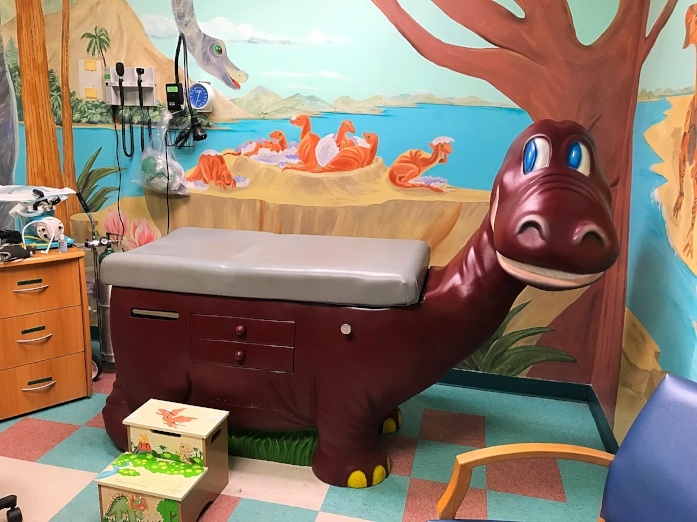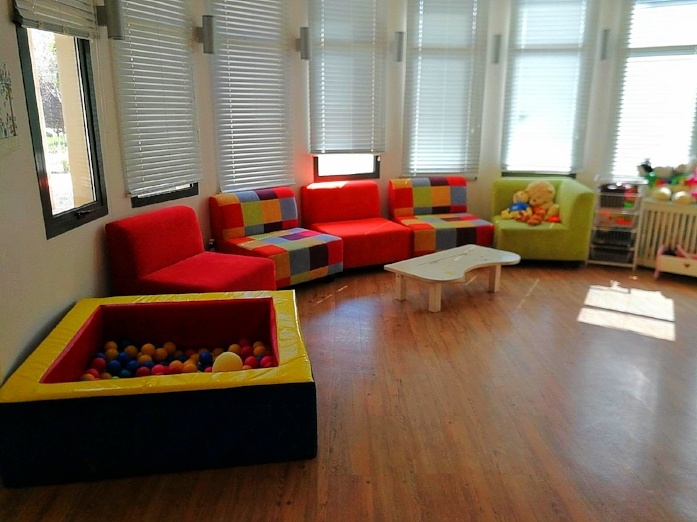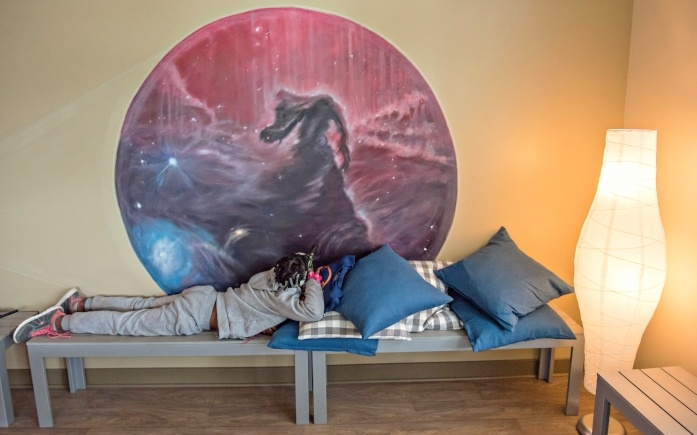
A Closer Look: SeriousFun Camp Medical Centers
Step onto the grounds of any SeriousFun camp and you’ll hear laughter, see bright smiles, and watch as kids do what they do best: have fun.
To know that these children, on any other day, might be found in the hospital due to their serious illnesses seems almost impossible. How can a child be in the hospital one day and having the time of their life at camp the next? The answer is: the camp medical center.

From their blueprints to their names, the medical centers at SeriousFun camps are created to be “child-friendly, high-quality, and well-designed,” explains SeriousFun Medical Advisor Dr. Wendy Cook. Each medical center is built to accommodate storage of hundreds of medications, be accessible 24 hours a day, and provide nurturing spaces that reflect the themes and mottos of each camp.
One design technique used to make medical centers feel less clinical is having the exterior blend in with all the camp facilities. On their approach, campers feel as if they are just going to any other part of camp. The intentional design continues inside. Stepping into any medical center, guests are greeted by child-height intake desks and inviting waiting rooms. From the furniture to the walls, the spaces are filled with color—all with the aim of making necessary treatment less overwhelming and more part of the camp experience.
Each camp has its own unique way of accommodating campers and providing an inviting and camp-like experience.

The tradition of high-level, camp-inspired medical care started in 1988 with the OK Corral, the medical center at The Hole in the Wall Gang Camp in Connecticut. There, medical staff and volunteers don the typical camp outfit: shorts and a t-shirt, no stethoscope. And for those campers in need of overnight care, the cabin-like design of the newly added Moose Lodge ensures they don’t miss out on a second of the camp experience.
At The Painted Turtle in California, The Well Shell has rooms that are themed like tree tops and boats. And instead of campers feeling like they’re missing out when treatment happens during a scheduled activity time, the activities come to them. It’s not uncommon to see swim staff flopping around in flippers inside the medical center where campers sit in front of big, paned windows overlooking the lake.
“The Medi Club has beautiful and inviting rooms suitable for campers who need medical care or supervision,” says Tali, the head nurse at Jordan River Village in Israel. It’s a treat walking into their waiting room where there is a ball pit, and where campers with IV treatments can be seen riding around in specially-made bicycles that let them move around with their medications attached.

Walking inside The Observatory at North Star Reach in Michigan, campers are greeted with giant murals of constellations that allow them to feel like they haven’t left the starry-night themed camp.
At Barretstown in Ireland, the medical center is known as the Med Shed and is housed in a wonderfully remodeled old stone building, reflecting the fairytale castle style of the camp. It has a large reception room with couches always partially occupied by the seven dwarves. Passing through a wheel chair accessible ramp to the nurse’s station, campers can overlook the secret garden.
Yes, the medical centers truly are the heart of SeriousFun camps. Thanks to them and the dedicated staff and volunteers that run them, SeriousFun is able serve more than 130 different, and often rare, medical conditions. They provide high-quality care that keeps campers safe—all the while ensuring that kids continue to “raise a little hell” just as Paul Newman intended.

